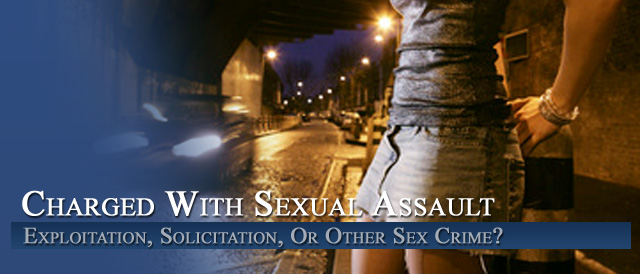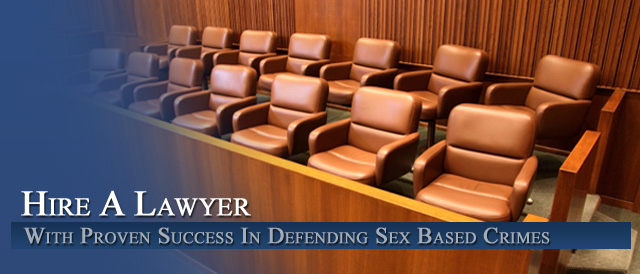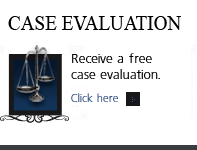




Colorado Domestic Violence and Sexual Assault Trials – The Use of Evidence of Prior Bad Acts at Trial Under Rule 404 B – Unjust Use of the Colorado Rules of Evidence “Tipping the Scales of Justice”
.. by Colorado Criminal Defense Lawyer – H. Michael Steinberg
If you ask any Criminal Defense Lawyer – with any serious amount of experience in the courtroom, they would tell you that Judges do NOT want to admit evidence of prior charged and uncharged crimes in a criminal trial. This idea is rooted in the notion that such evidence, by its nature, is potentially prejudicial to the criminal defendant.
Judges are hesitant to admit this type of evidence out of concern that the jury will convict the accused because he is an individual who possesses a bad character or criminal propensity, rather than on the legal standard of proof “beyond a reasonable doubt.”
The clear and justified rule is this – evidence of prior charged and uncharged crimes and bad acts is inadmissible, despite its probative value, if the purpose for which it is offered is to discredit the defendant.’ A general rule of evidence, however, is that “all relevant evidence is admissible unless its admission violates some exclusionary rule.”” Evidence of prior charged and uncharged crimes is admissible if it tends to establish an element of the crime charged, or is relevant to one of the well-recognized exceptions.
The recognized theories under which such evidence may be introduced include: intent, motive, knowledge, common scheme or plan, and identity of the defendant.
§ 16-10-301(1), (3). Before admitting evidence under this section:, the district court must perform a Rule 404(b) admissibility analysis.
The court must determine that:
(1) the evidence relates to a material fact;
(2) the evidence is logically relevant;
(3) the logical relevance is independent of the intermediate inference that the defendant was acting in conformity with his bad character; and
(4) the evidence has probative value that is not substantially outweighed by the danger of unfair prejudice.
The DA has the burden to prove to the trial judge as to the law that favors the admissibility of evidence of prior charged and uncharged crimes and bad acts in the domestic violence prosecution.
Since domestic violence and sexual assault cases turn, in large part, on the credibility of the victim, the prosecution’s success in introducing such evidence before the trier of FACT OFTEN RESULTS IN THE DIFFERENCE BETWEEN CONVICTION AND ACQUITTAL.
The purpose for which this evidence is offered is the critical focus of the court’s inquiry.
Thus, if the prosecution can meet its burden by establishing a theory or purpose other than showing the defendant’s criminal propensity, the appellate courts tend to approve the trial court’s admission of such evidence.
At trial, the State of Colorado is prohibited from offering evidence of a defendant’s past conduct for the purpose of showing the defendant’s bad character or propensity to commit the crime charged.
Evidence of prior bad acts is more and more – allowed in or “admissible,” for the alleged purpose of demonstrating the defendant’s knowledge, intent, motive, modus operandi, pattern of conduct or the absence of mistake.
Evidence of prior bad acts can also be admissible to show the victim’s state of mind.
In recent years, there has been a growing trend toward admission of prior bad acts in domestic violence cases because there is often a history of abuse that shows a clear pattern of behavior by the defendant and is highly probative of the defendant’s intent and state of mind at the time of offenses.
Still, defendant’s counsel should always argue that the prejudice suffered by the defendant, if the proposed evidence is admitted, will far outweigh its probity.
A NEW 2011 Case – Reverses the Use of 404 B Evidence in a Key Colorado Cases
In COLORADO COURT OF APPEALS People of the State of Colorado vs Michael Lee Jones, Defendant-Appellant.
______________________________________________________________________________
JUDGMENT REVERSED AND CASE REMANDED WITH DIRECTIONS
Announced August 18, 2011
______________________________________________________________________________
In the Jones case, the Defendant contended that the district court erred by admitting evidence under CRE 404(b) that he had allegedly sexually assaulted two other women because those incidents were insufficiently similar to his alleged assault of J.R.;
Here is the Court of Appeal’s Analysis – CRE 404(b)
Applicable Law – General Principles
Rule 404(b) prohibits the admission of evidence about a defendant’s prior acts when offered to show his bad character and that he acted in conformity with that character. Kaufman v. People,
202 P.3d 542, 552 (Colo. 2009). However, other act evidence is admissible for other reasons, including to show “proof of motive, opportunity, intent, preparation, plan, knowledge, identity, or absence of mistake or accident . . . .” CRE 404(b); see Kaufman,202 P.3d at 552.
Similarly, section 16-10-301, C.R.S. 2010, provides that in sexual offense prosecutions, the People may introduce other act evidence for any purpose other than propensity, including:
Refuting defenses, such as consent . . . ; [or] showing a common plan, scheme, design, or modus operandi, regardless of whether identity is at issue and regardless of whether the charged offense has a close nexus as part of a unified transaction to the other act.
§ 16-10-301(1), (3). Before admitting evidence under this section, the district court must perform a Rule 404(b) admissibility analysis. People v. Snyder, 874 P.2d 1076, 1078 (Colo. 1994); People v. Martinez, 36 P.3d 154, 158-59 (Colo. App. 2001).
The court must determine that
(1) the evidence relates to a material fact;
(2) the evidence is logically relevant;
(3) the logical relevance is independent of the intermediate inference that the defendant was acting in conformity with his bad character; and
(4) the evidence has probative value that is not substantially outweighed by the danger of unfair prejudice. Kaufman, 202 P.3d at 552; accord People v. Spoto, 795 P.2d 1314, 1318 (Colo. 1990).
Th district court has substantial discretion in determining whether Rule 404(b) evidence is admissible. The trial court’s decision is rarely overturned unless it is manifestly arbitrary, unreasonable, or unfair.
The Analysis Applied to This Case
In this cases – the Defendant concedes that the evidence about the two alleged assaults related to a material fact – whether he caused J.R. to submit to sexual intercourse “by means of sufficient consequence reasonably calculated to cause [her] submission against [her] will.”See § 18-3-402(1)(a), C.R.S. 2010 (defining sexual assault).
Therefore, we need not address the first prong of the Spoto test. Our analysis below focuses on the second and third prongs, and therefore we set out the law applicable to those considerations.
Logically Relevant
Evidence is logically relevant if it has any tendency to make the existence of a material fact more or less probable than it would be without the evidence. In a sexual assault prosecution, evidence of the defendant’s other alleged sexual assaults may be logically relevant under the “doctrine of chances.”
This doctrine posits that evidence that a defendant repeatedly performed an unusual act over time decreases the probability that he acted accidentally or innocently.
Thus, in a sexual assault prosecution, if the defendant claims that the complainant consented, or that there is an absence of evidence of lack of consent, as defendant did here, evidence that he committed other sexual offenses may be admissible under the doctrine of chances because
“[w]hen one person claims rape, the unusual and abnormal element of lying by the complaining witness may be present. But, when two (or more) persons tell similar stories, the chances are reduced that both are lying or that one is telling the truth and the other is coincidentally telling a similar false story.”
Logical Relevance Independent of Impermissible Inference.
The third prong of the Spoto test requires other act evidence to be logically relevant absent the impermissible inference that because the defendant committed the other acts, he had a propensity to commit the charged offense and, therefore, committed it.
Evidence admitted under the doctrine of chances does not rely on this inference where the evidence of the defendant’s repeated unusual conduct leads to an objective or statistical likelihood that he committed the actus reus rather than a subjective probability that he did so based on his character.
To ensure that evidence based on the doctrine of chances has probative value independent of an impermissible inference about the defendant’s character, the court must determine that (1) the
evidence of the other acts is similar to the charged crime; (2) the number of unusual occurrences in which the defendant has been involved exceeds the frequency rate for the general population; and (3) there is a genuine dispute between the prosecution and the defense over whether the actus reus occurred.
A dissimilar prior act is not probative under the doctrine of chances because it is the improbability of a like result being repeated by mere chance that gives the other act its probative weight. The degree of similarity necessary depends on the purpose for which the evidence is offered: evidence seeking to establish the defendant’s identity requires the most similarity, while evidence seeking to prove the defendant’s intent or the occurrence of the actus reus requires less.
The Court’s Reasoning in Reversing the Lower Court
We conclude that the evidence of the other two alleged assaults was not logically relevant, independent of the impermissible – but not illogical – inference that defendant acted in conformity with his bad character. As noted, the district court admitted the evidence about the
prior alleged assaults to show “common plan, scheme, or design, and to rebut the defense of consent.” For evidence of common plan, scheme, or design to be admissible under the doctrine of chances, the evidence of prior conduct must demonstrate not merely similarity in results, but such occurrence of common features that the various acts are naturally to be explained as caused by a general plan of which the charged crime and the prior misconduct are the individual manifestations.
Similarly, to be admissible to rebut the defense of consent, evidence of the prior acts should “establish[ ] a compelling pattern and remarkable similarity of [the] defendant’s sexual misconduct.”
Section 16-10-301 allows the district court to admit evidence that the defendant committed other sexual offenses to show “common plan, scheme or design, or modus operandi . . . regardless of whether the charged offense has a close nexus as part of a unified transaction to the other act.” This language indicates that evidence of a “common plan, scheme, or design” need not prove that there was an overarching plan, but rather, like modus operandi, that the defendant had a distinctive manner of carrying out a particular offense.
Though the manner of committing the other offenses need not replicate in every respect the manner in which the charged offense was committed, the methods used in the commission of the acts being compared must be both similar to each other and dissimilar from the methods generally used in such an offense,
Evidence of other sexual assaults was inadmissible for the narrow purposes of proving common design or modus operandi because the similarities between the assaults were common to many sexual assault cases and were not particularly distinctive of the defendant’s conduct.
Accordingly, we conclude that the two other alleged assaults were not sufficiently similar to the alleged assault of J.R. for evidence thereof to be properly admissible to show common plan, scheme, or design, or to rebut the defense of consent.
The evidence was merely propensity evidence barred by CRE 404(b). It follows that the district court abused its discretion in admitting the evidence.
The Error Required Reversal of the Conviction
We also conclude that the district court’s abuse of discretion in admitting evidence of the two alleged prior assaults was not harmless. The People presented their case over four days at trial.
However, they introduced evidence about the alleged assault on J.R. only on the first day, and used the bulk of the remaining three days to present evidence about the other two alleged prior assaults.
There were no witnesses to the alleged assault; indeed, there were no witnesses who even saw defendant and J.R. together. Moreover, the People’s case depended on the alleged non consensual nature of the sexual intercourse but, as noted, the SANE nurse testified that
J.R.’s only visible injury, the tear to her genitalia, was consistent with consensual intercourse.
In these circumstances, we conclude that there was a reasonable probability that the Rule 404(b) evidence substantially influenced the verdict.
Were the guilty verdict “depended in large part” on Rule 404(b) evidence that the district court improperly admitted to rebut the defendant’s defense, the error in admitting the evidence was not harmless). Therefore, we reverse the judgment of conviction and remand the case for a new trial.
Other Articles of Interest:
- Understanding Colorado’s Sex Offender Risk Scales – Sex Offender Evaluations
- Colorado Criminal Sex Crimes Law – FAQ – Can A Colorado Sex Offender Transfer Probation to Another State Under the Colorado Lifetime Treatment of Sex Offenders Act?
- Attorney Profile
- When Your Colorado Criminal Lawyer Fails In A Colorado Sex Crime Case – Ineffective Assistance Of Counsel In Colorado Sex Crimes And Other Kinds Of Cases
- Understanding the Juvenile Sex Offender and Treatment Modalities in Colorado












